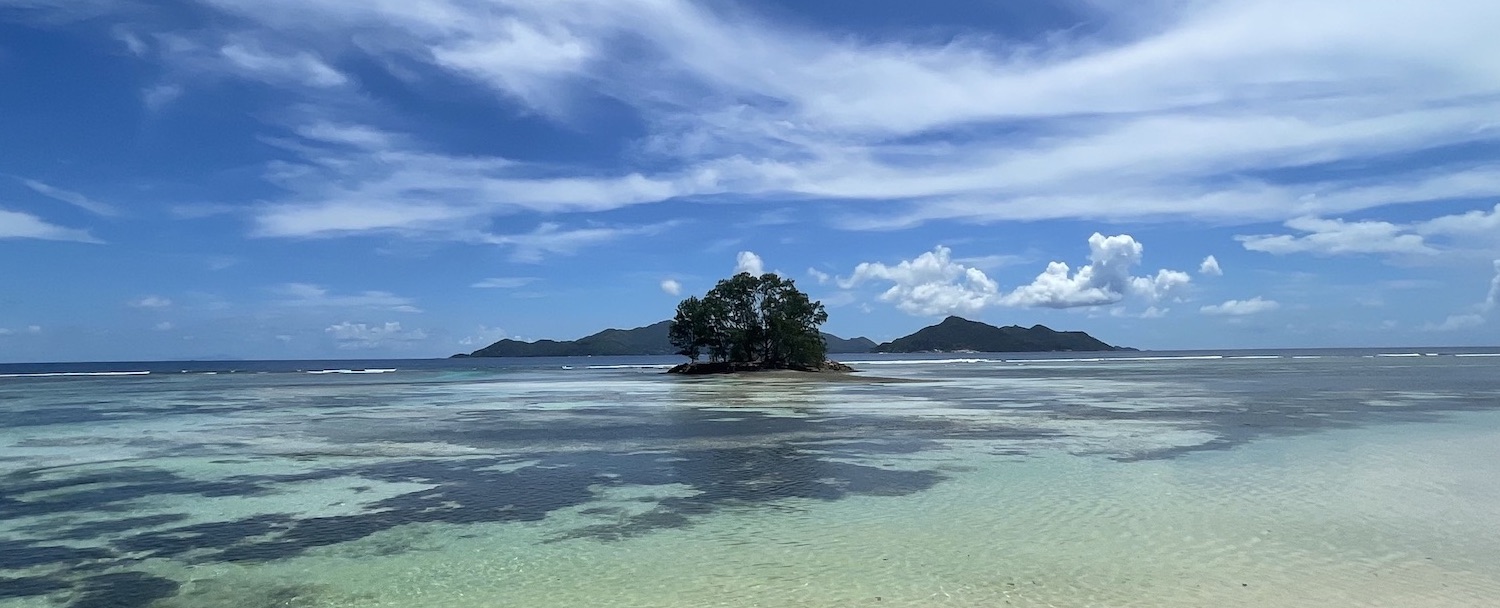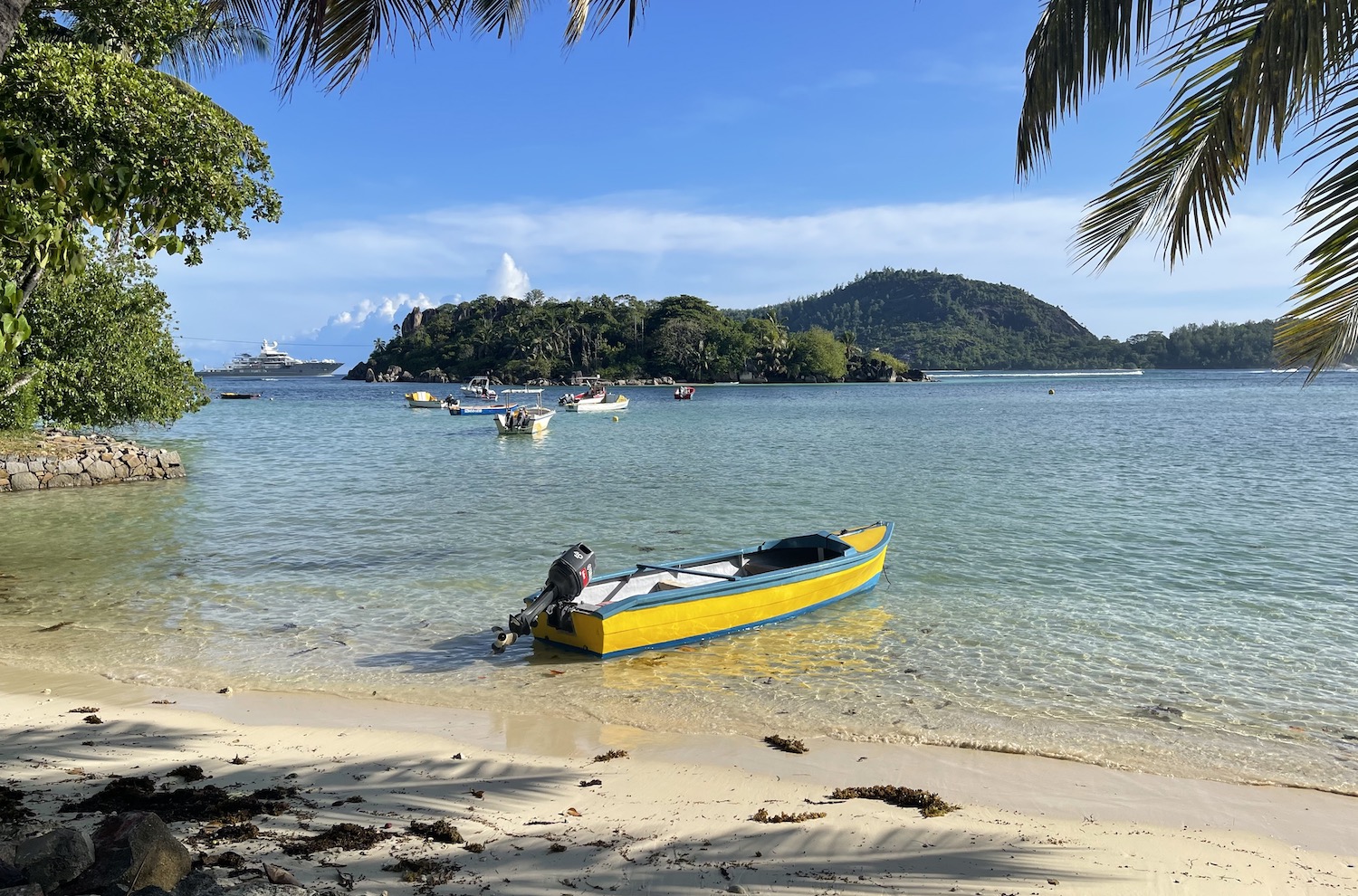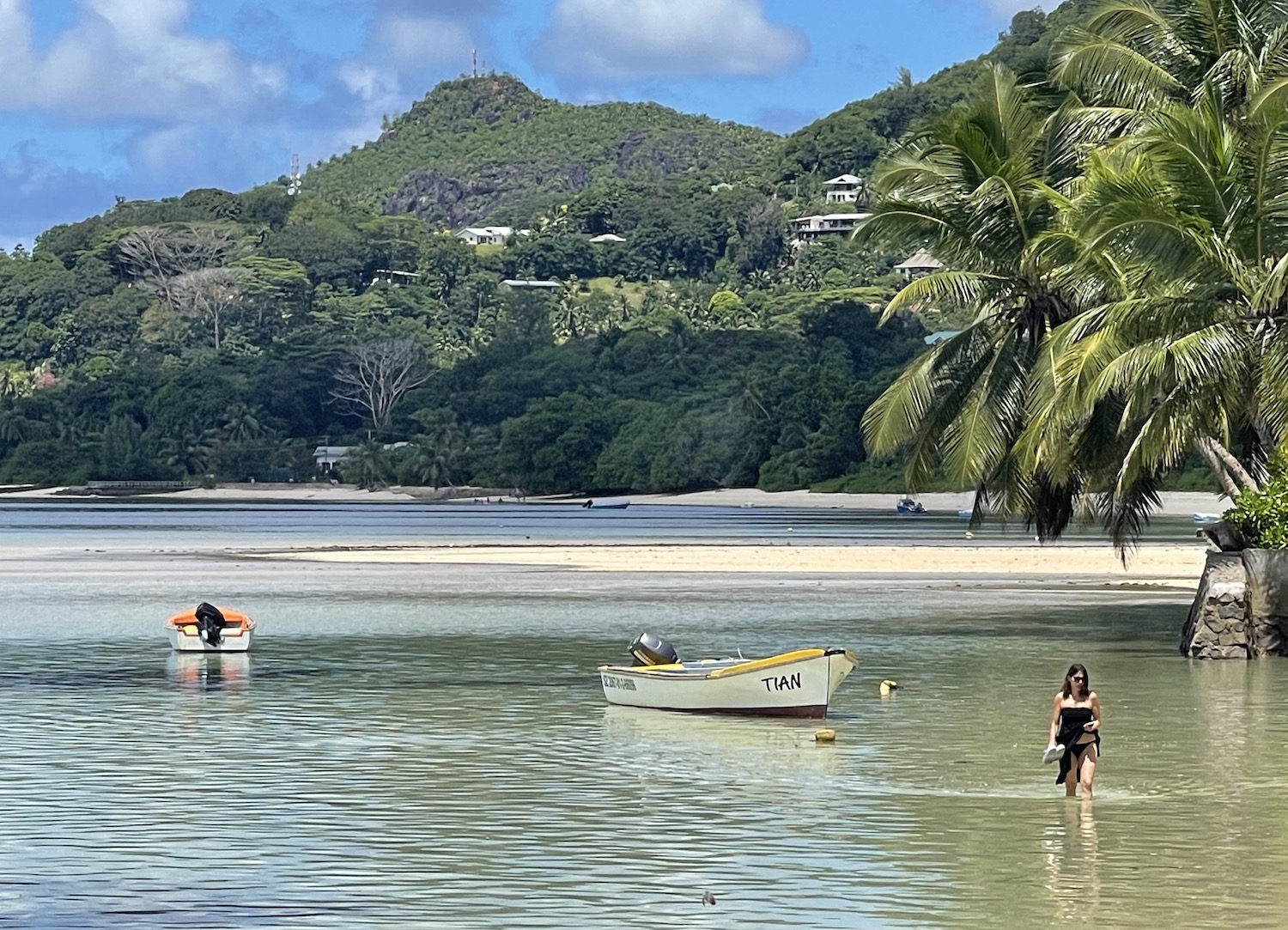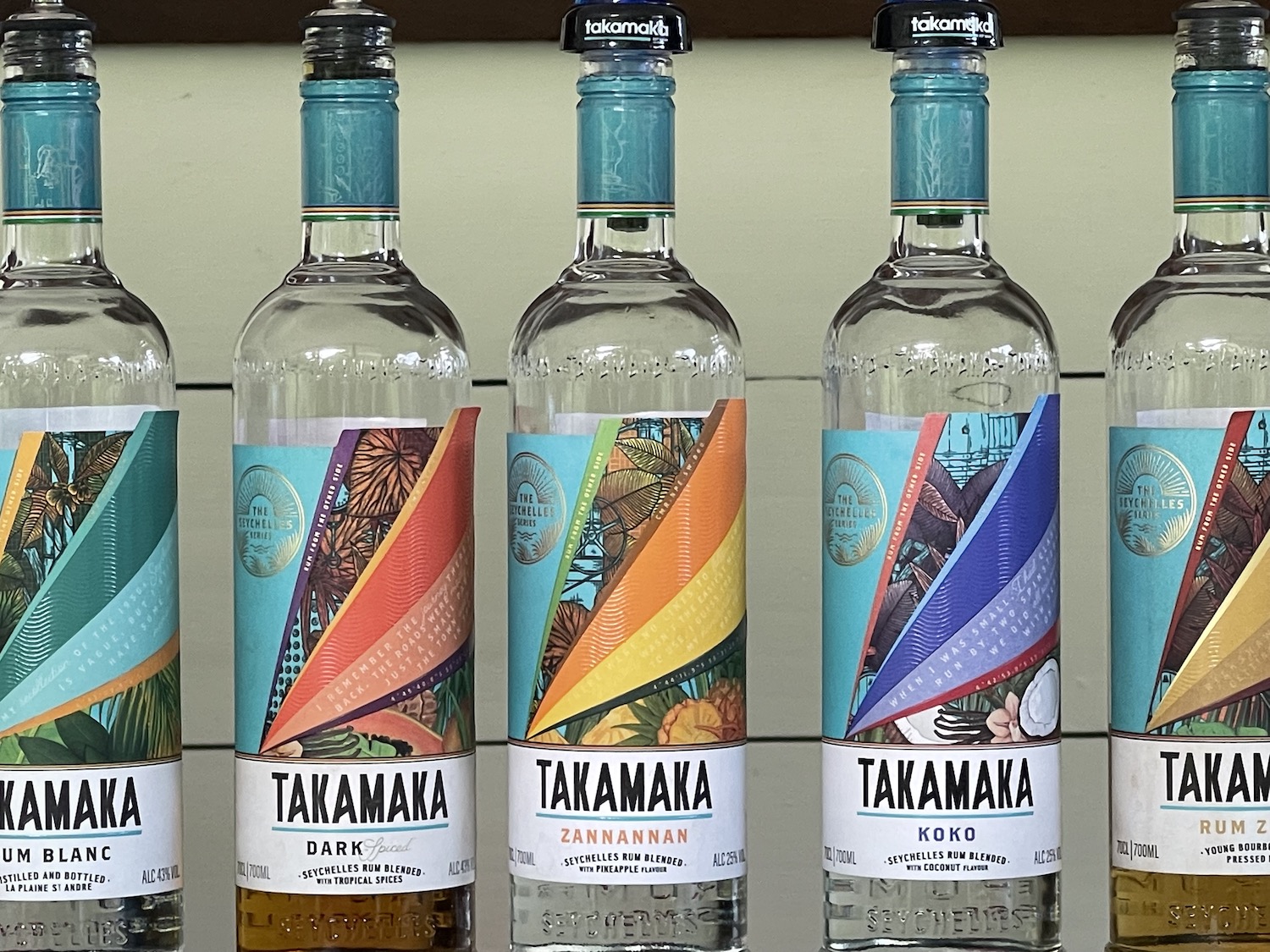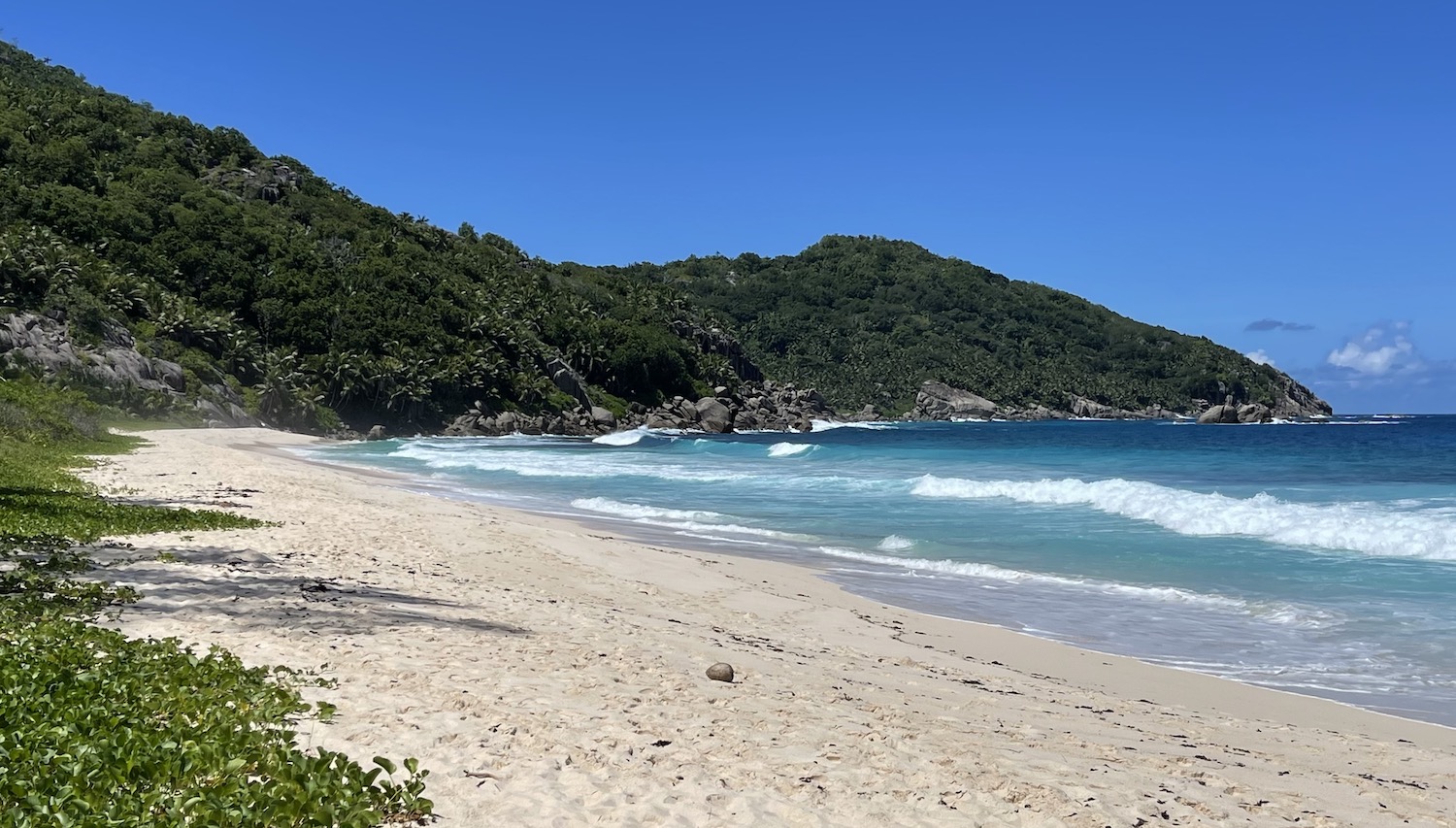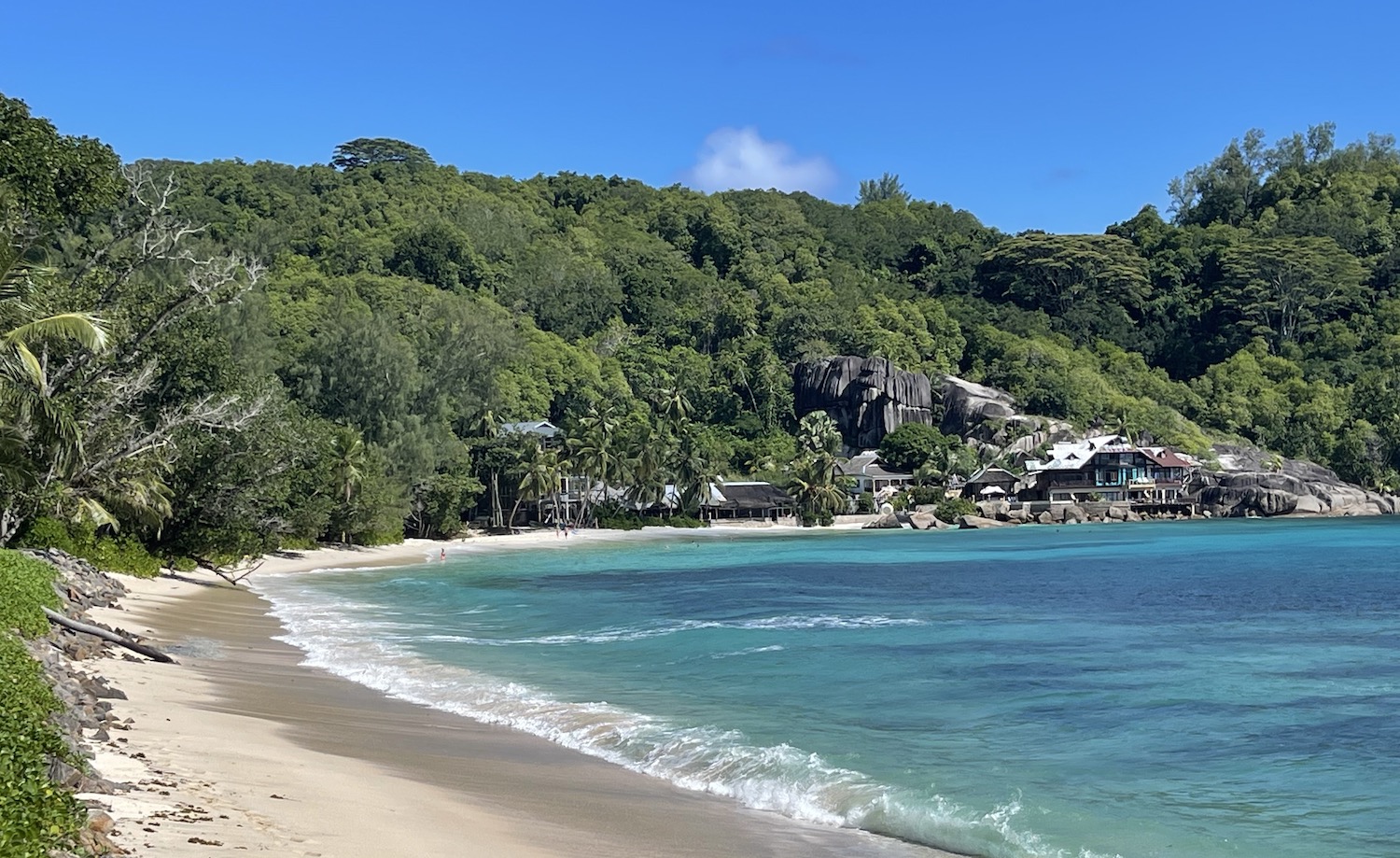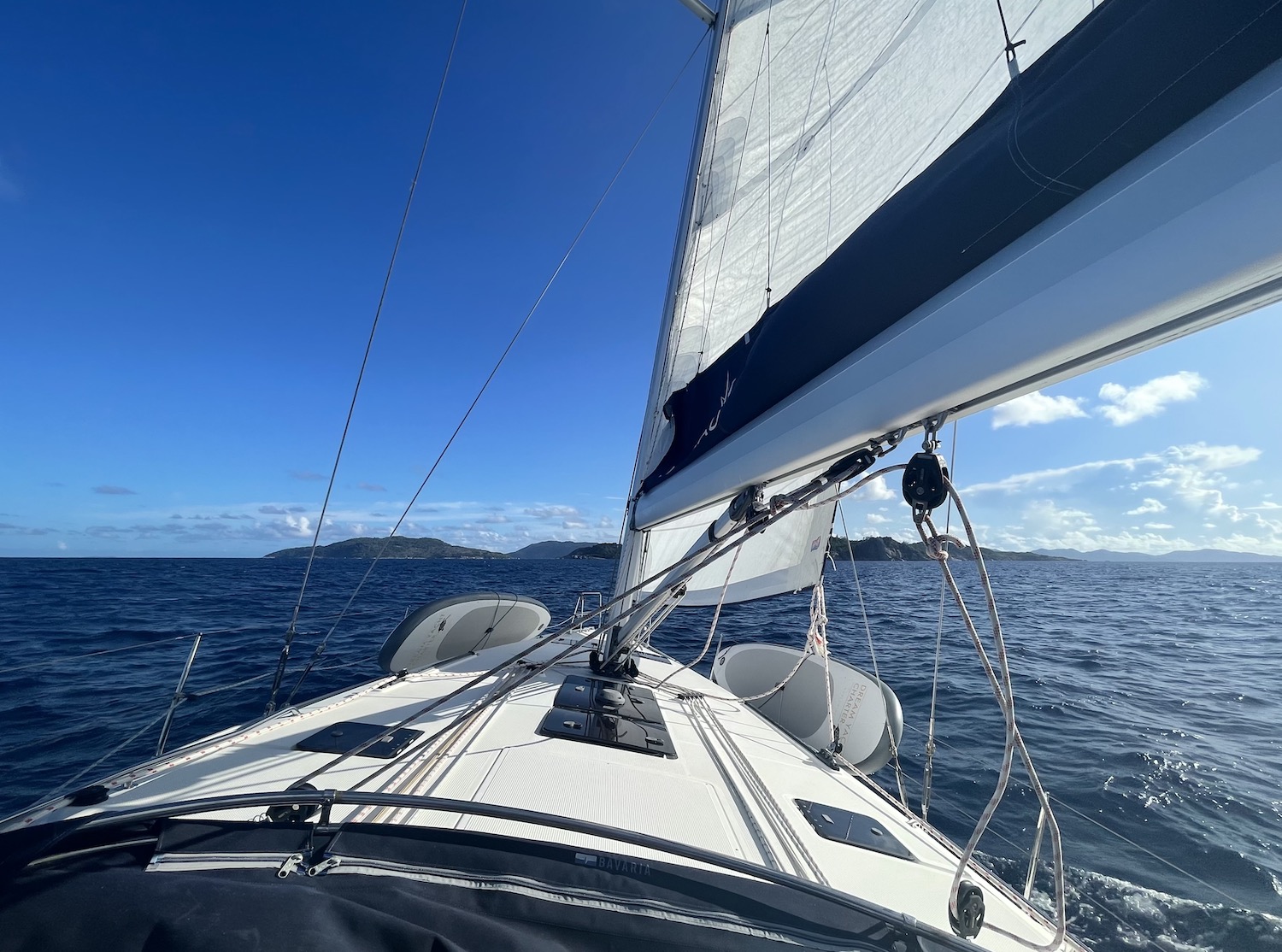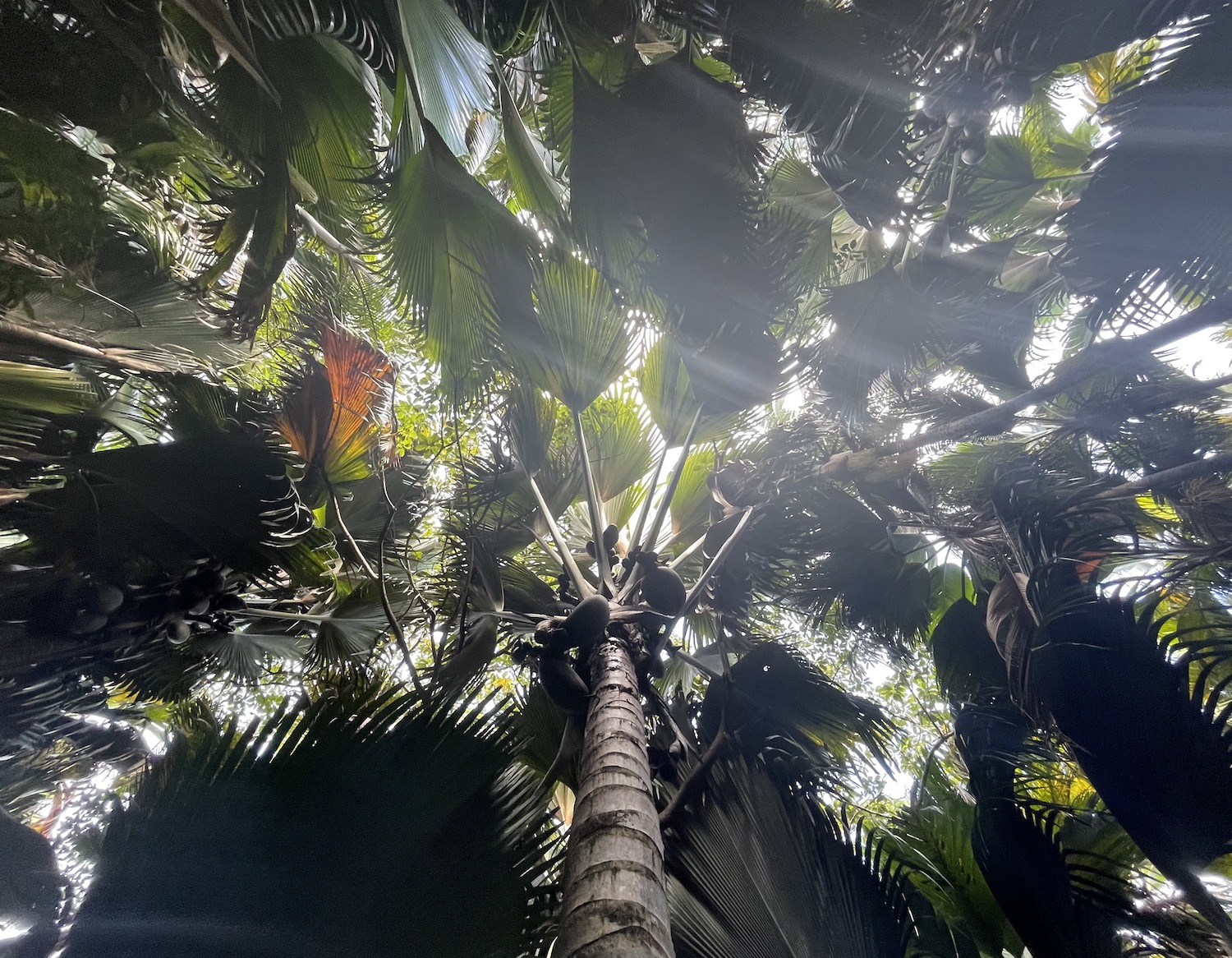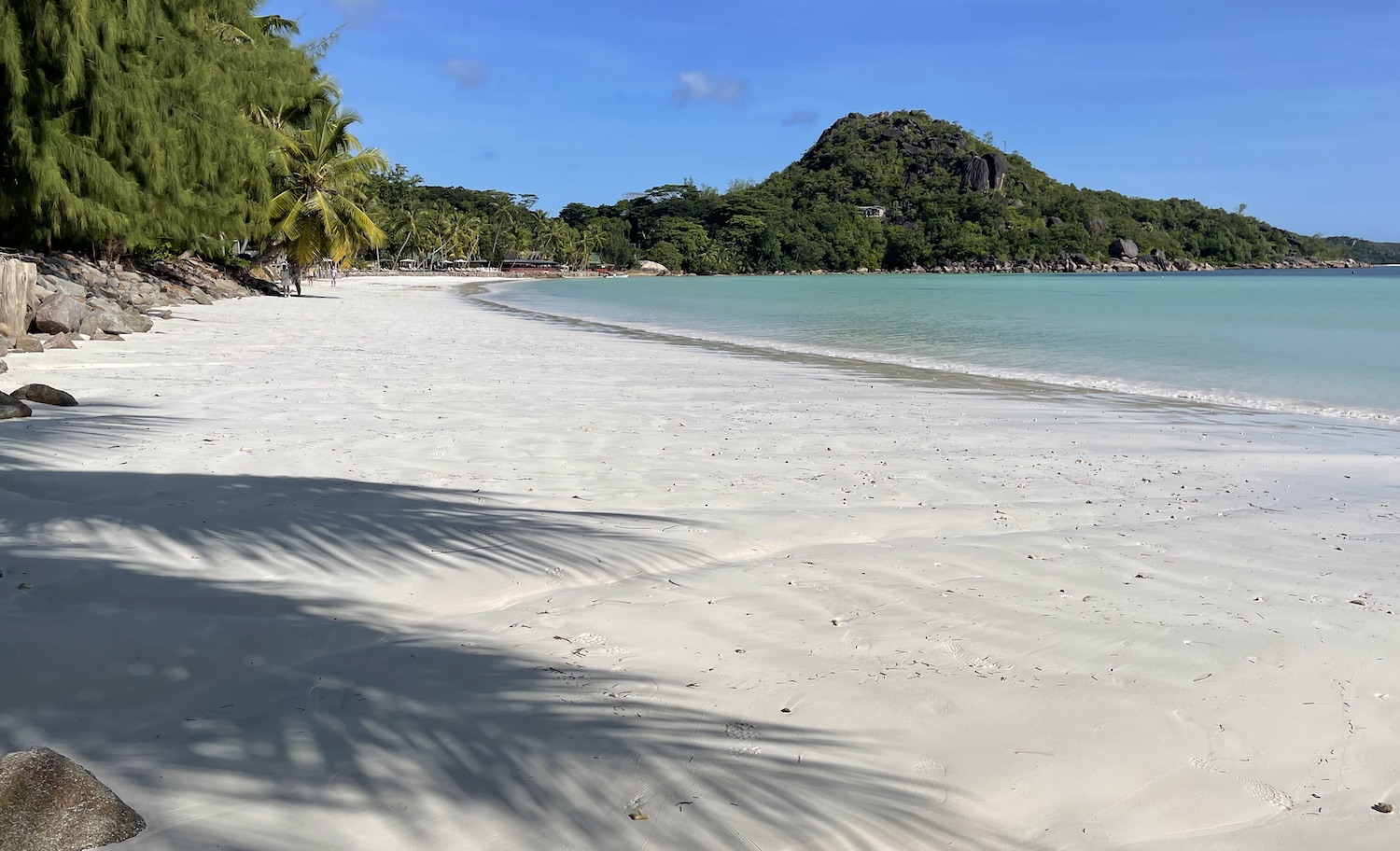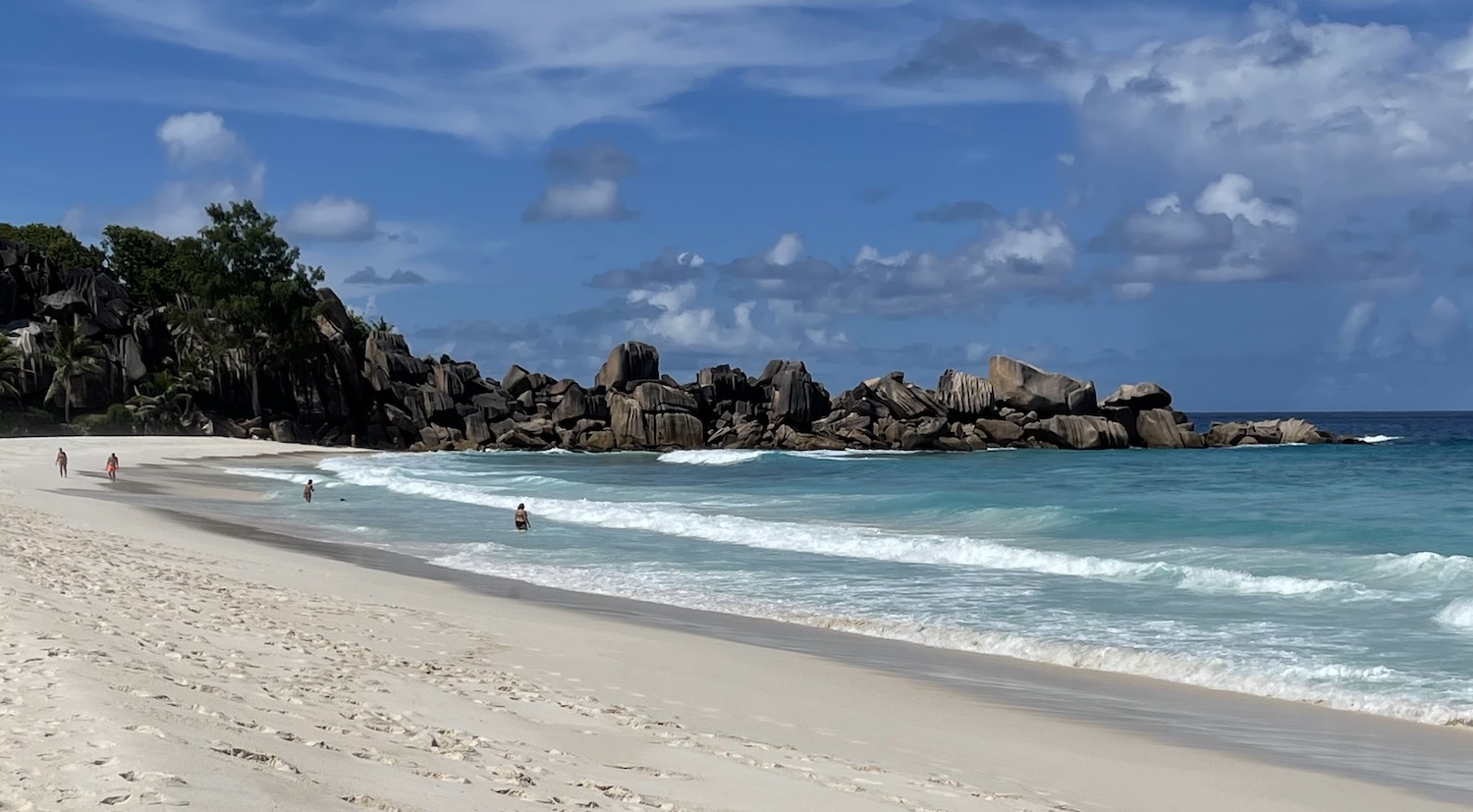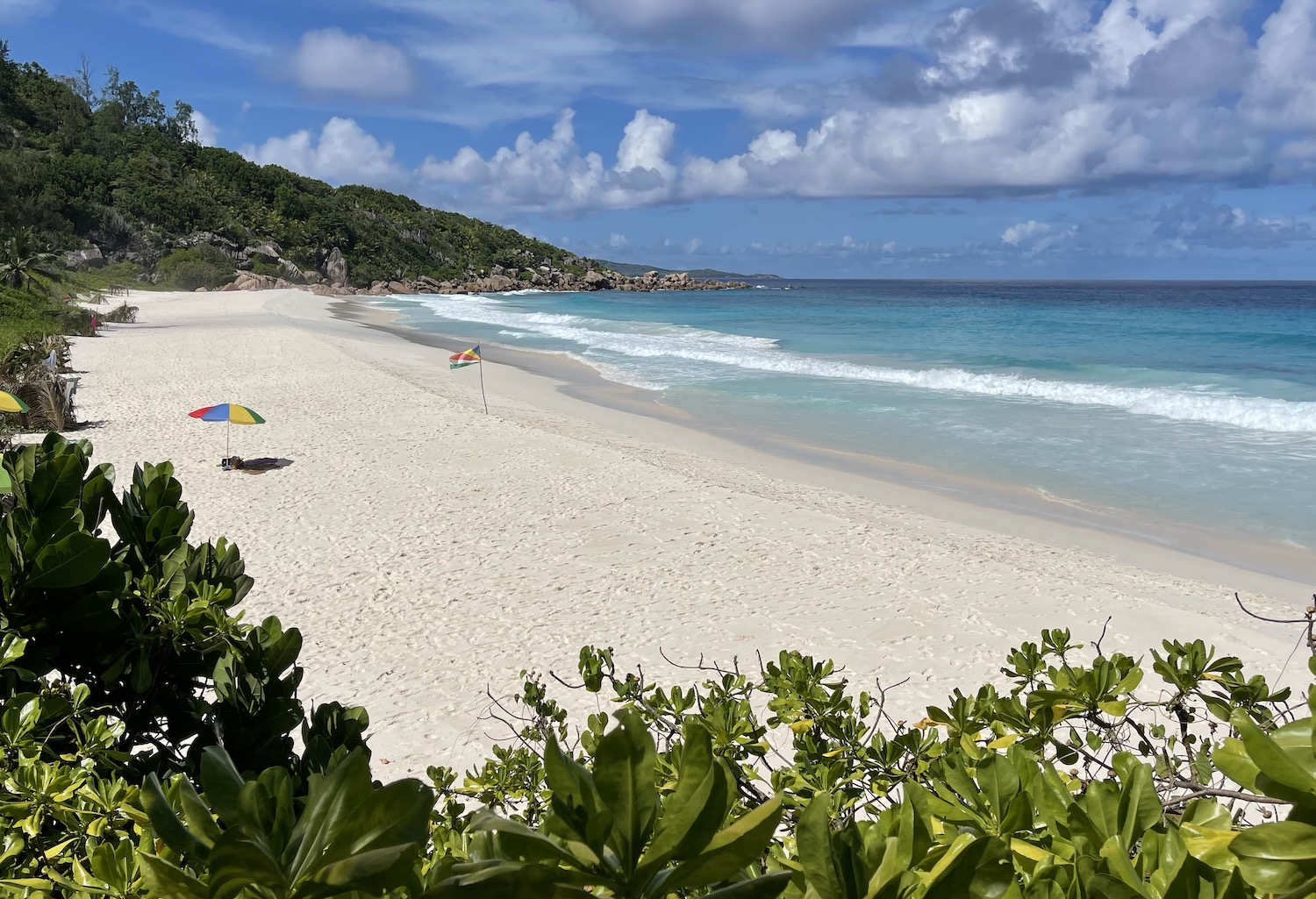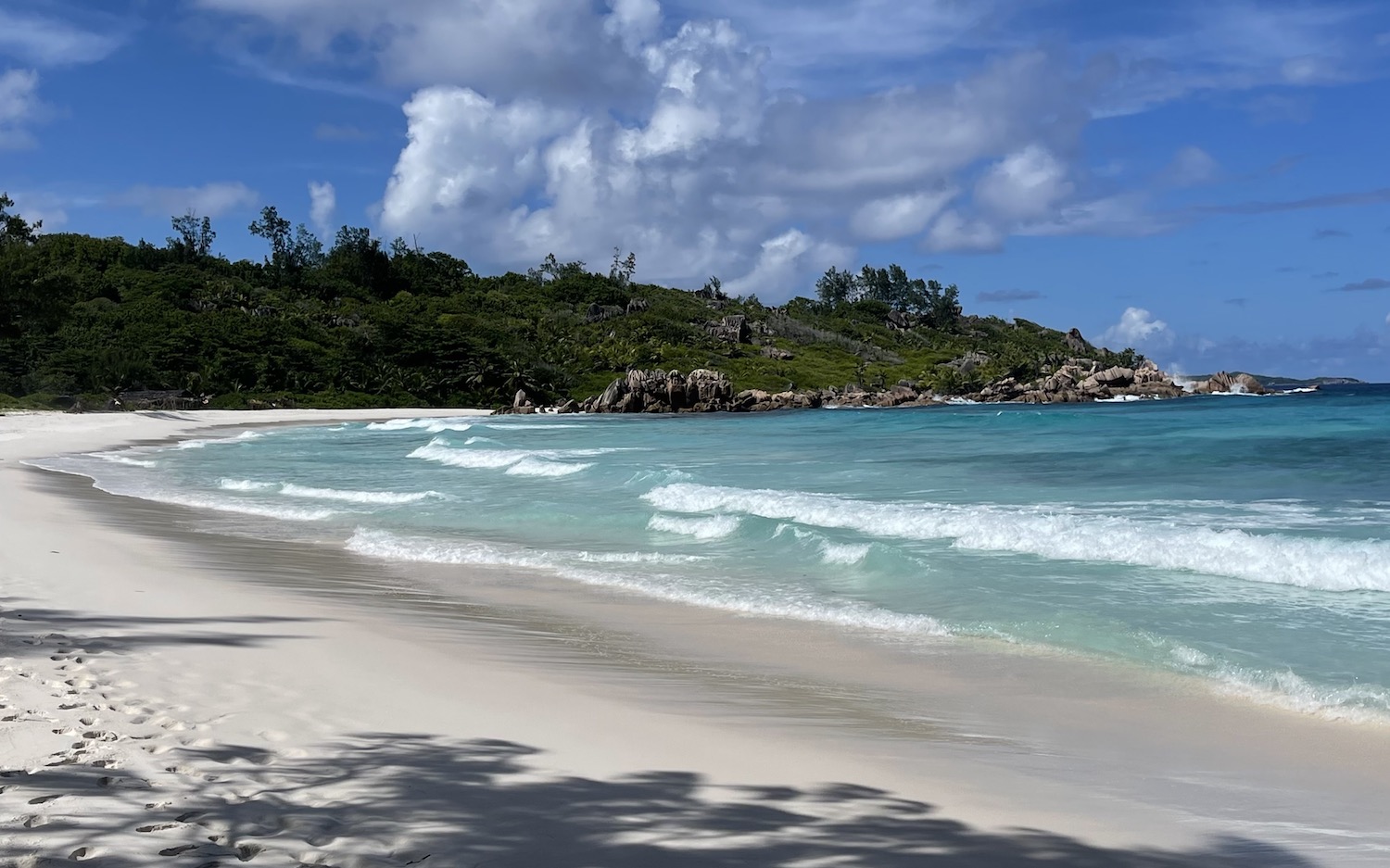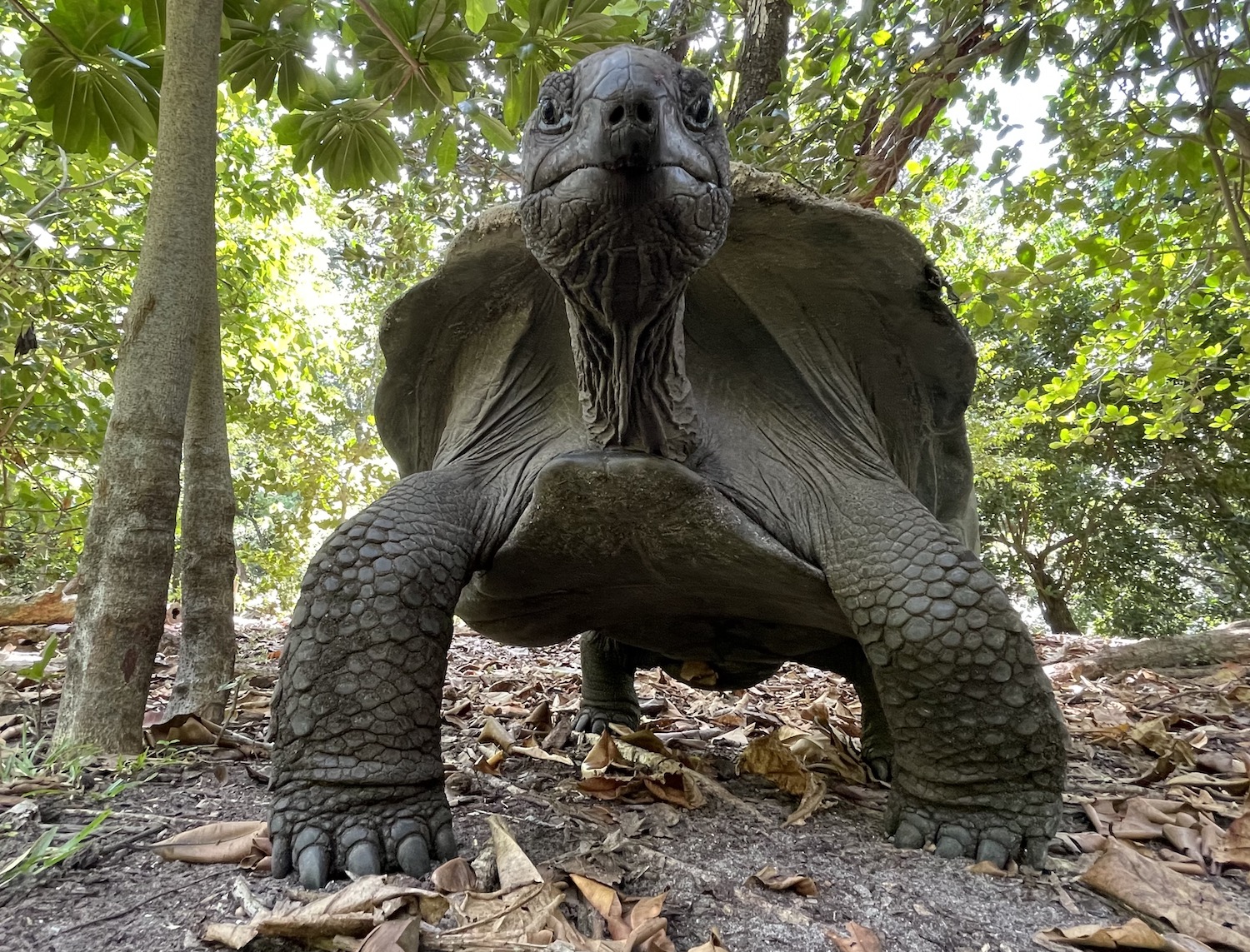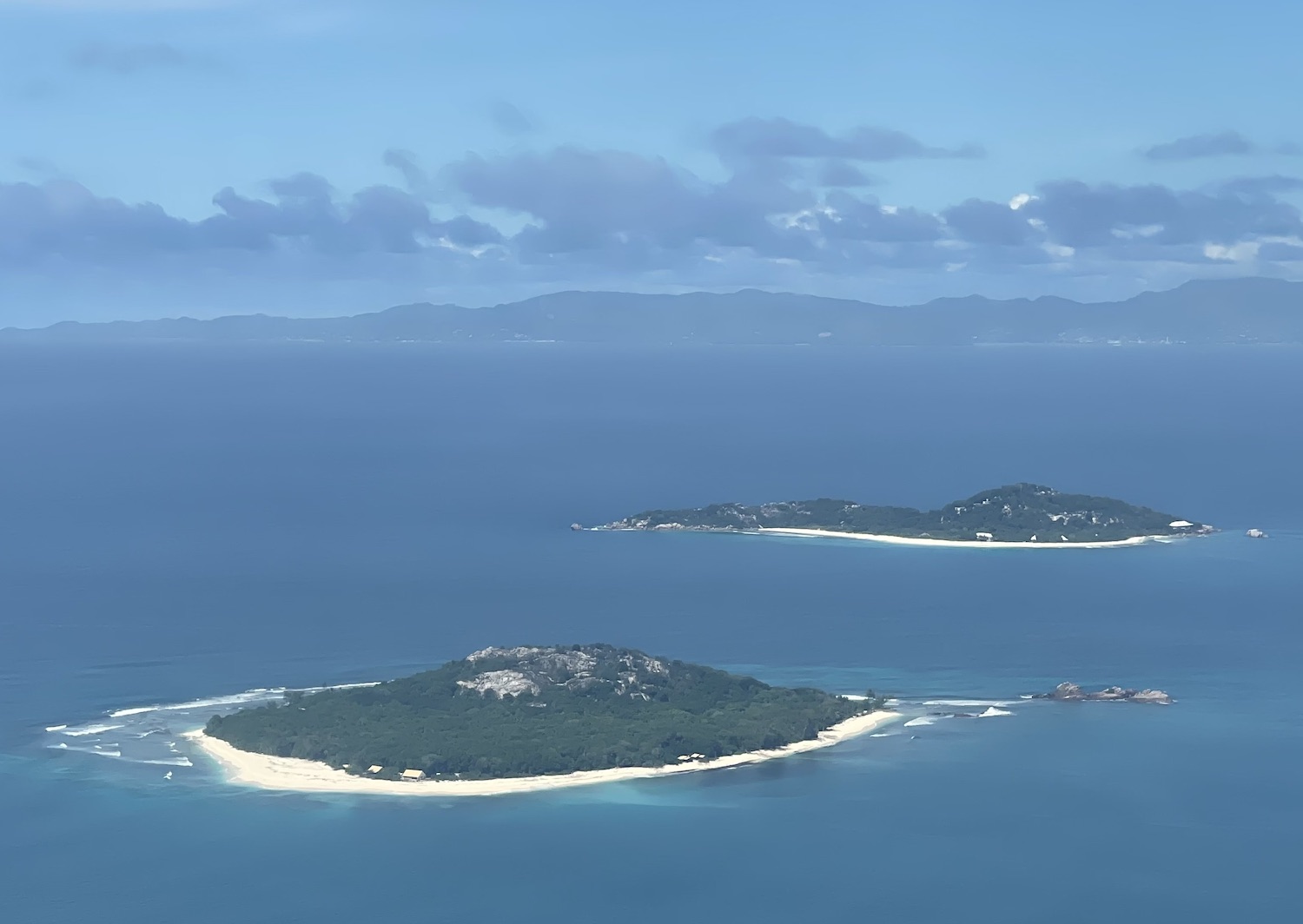You already know that the Seychelles is everyone’s idea of a tropical island paradise. So apart from some gratuitous photographic evidence of that, this little piece simply aims to give you a bit of context and a few pointers on which islands have the best beaches, the best jungle trips, and the best sailing.

The Seychelles archipelago is in the Somali Sea segment of the Indian Ocean, approximately 1,500 kilometres east of mainland Africa. Although estimates vary depending on which small islets and large rocks are included, it consists of roughly 200 named islands. It is the least populous sovereign African nation, with about 100,000 Seychellois citizens (slightly fewer than the number of annual tourists prior to Covid-19).
First sighted by Europeans in 1503 and uninhabited until 1770, the first 28 settlers included Miguel, Jouan, Fernand, Ignace, Le Villers, Maladore and Maganga, who were all brought against their will as slaves; by 1790, the population was 572 (65 whites and as many as 507 slaves).
Positioned strategically between Africa and Asia, the archipelago became subject to competing imperial interests. France, which already ruled Mauritius and Réunion in the region and later Madagascar and Comoros as well, seized control in 1756; the islands were then named after Jean Moreau de Seychelles, Louis XV’s Finance Minister. Britain took over during the Napoleonic Wars.
The country was built by slave labour, mostly from Madagascar and Mozambique, in cotton plantations. As in all French colonies, the barbaric Code Noir was in force throughout the archipelago, with provisions that included expelling all Jews and punishing runaway slaves by cutting off their ears.
Slavery was finally abolished here in 1835 (when 6,521 slaves were set free out of a total population of 7,500) though a system of “apprenticeships” meant that in fact emancipated slaves continued to be tied to their former owners. Illicit slavery continued for decades as coconut, guano, vanilla, cinnamon, rubber and patchouli estates all flourished. The last known slave to die passed away as recently as 1955.
The Seychelles became independent in 1976 and despite a succession of coups and attempted coups (the first peaceful transfer of power occurred in the 2020 presidential elections), as well as the devastations of tropical cyclone Felleng in 2013, it now has the highest nominal per capita GPD of any nation in Africa.
The vast majority of this wealth is derived from high-end tourism, which has boomed since the construction of the international airport in 1971. In recent years, foreign investment has been encouraged to upgrade hotels, construct slot-machine casinos and other facilities. About 80% of tourists come from Europe, mostly from France and Britain, almost all the rest from Africa.
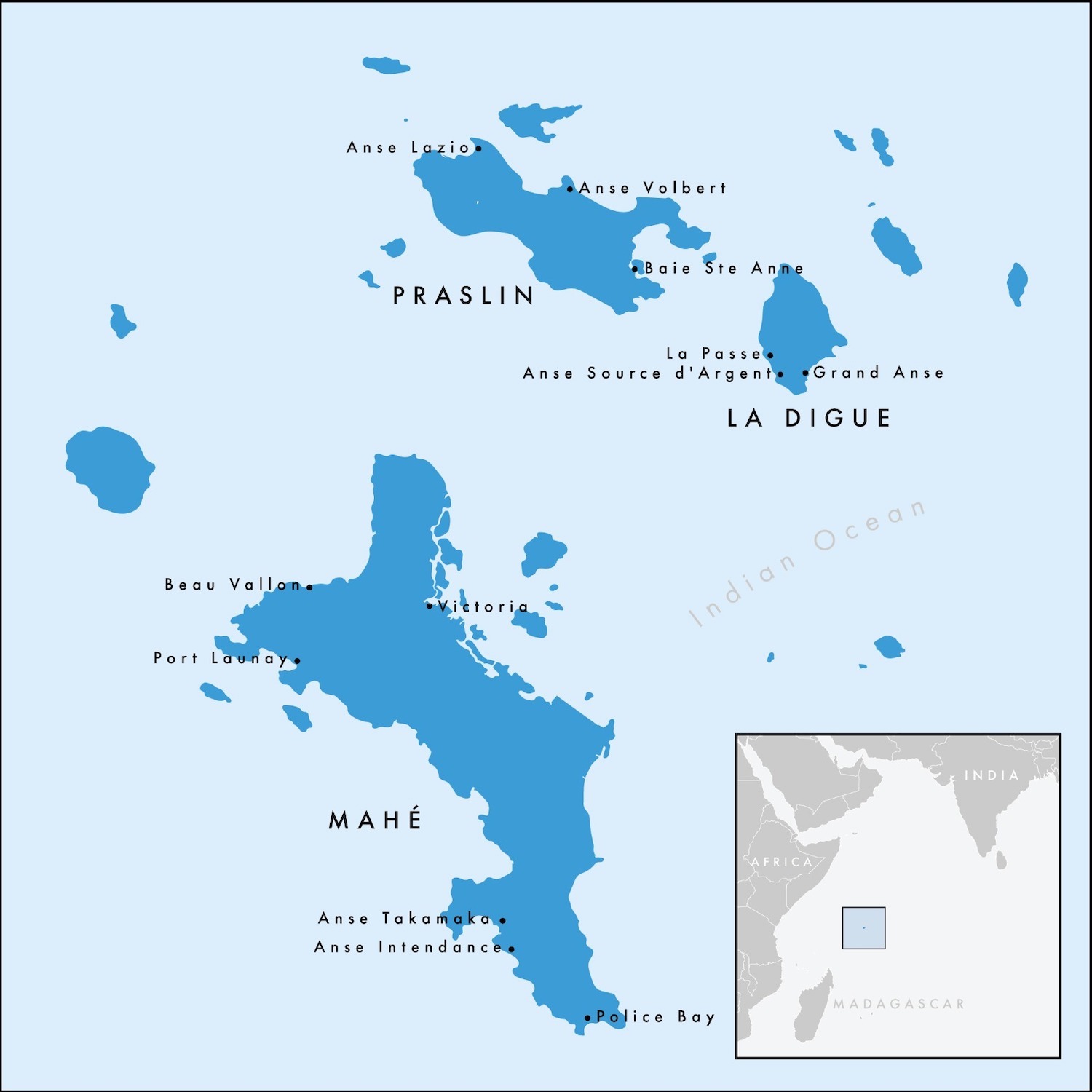
The Seychelles is divided into two parts. There are forty-three “Inner Islands” clustered together around the main trio of Mahé, Praslin and La Digue, which are the focus of virtually all tourism and the subject of this little review. The number of tourist beds in these three most popular islands has been capped at 4,000 to encourage development in others to increase capacity without further pressures on the environment.
Then there are about 150 other islands in several notional groups that are spread across the Indian Ocean. These “Outer Islands” are rarely visited, not least because they are so difficult to reach. But they are a dream for the adventure traveller looking for a genuine exotic paradise and – I hope – they will be the subject of another review in due course.

Across the whole of the Seychelles the temperature hovers between 25°C and 30°C throughout the year, though the best time to come is May to November when the trade winds blow away the humidity. Cartoon puffs of cloud are common, sometimes delivering light showers that are quickly over.
Everyone is bilingual in English and a French-Creole dialect (radio presenters have to say everything in both), you drive on the left, you spend rupees in cash everywhere and through credit cards on Mahé and Praslin, and you drink Takamaka rum, Seybrew beer and Slow Turtle Cider all over. One odd fact is that with about 800 prisoners, the Seychelles has the highest incarceration rate in the world, 15% greater even than the US.
There are lots of all-inclusive resorts as you would expect, but if you are looking for a more independent experience than a pampering honeymoon suite there are also boutique hotels and Creole restaurants. Obviously, the best way to go is on a yacht and they are easy to charter with or without skipper and crew.
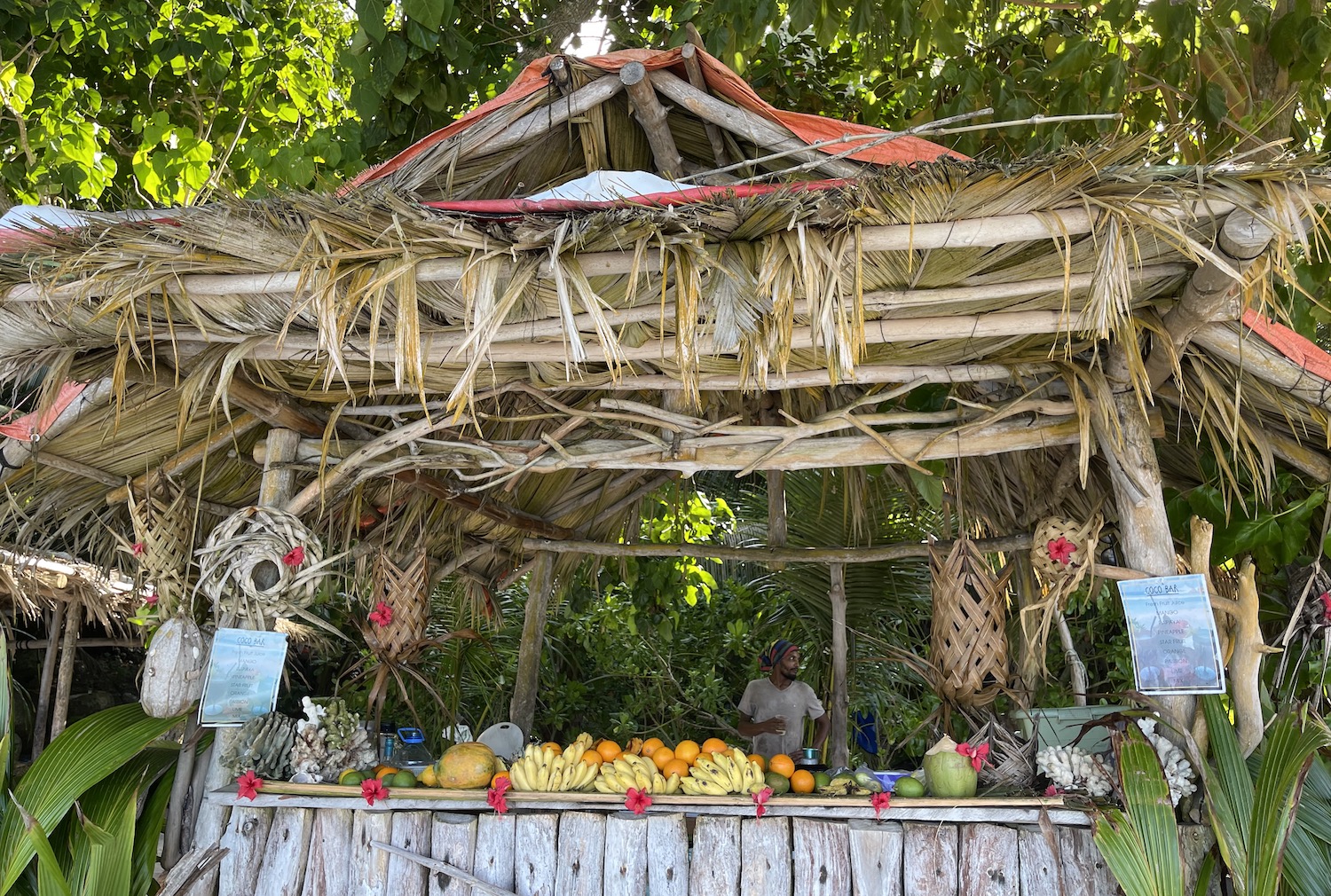
In general, the beaches are not broad expanses but thin slivers, many of which disappear altogether in high tide. Just like you want they often face turquoise lagoons produced by lines of coral reef just out to sea that create breaking white crested waves, and they are usually shaded under palm and takamaka trees of manicured wilderness, but their standout feature is that they are decorated with sculpted granite boulders that form discrete and discreet segments of white sand. They are extremely photogenic though not always practical as there are very few facilities on the public beaches. The bigger ones sometimes have beach bars with a reggae vibe hidden in the trees and those invariably have a cute national flag stuck out front in the sand to signify their presence.
Mahé
The capital, inevitably called Victoria, is on the north-east coast of the biggest island, Mahé. Despite being home to a third of the population of the entire country, it claims to be the smallest capital city in the world, which I can well believe, and its one-way system quickly weaves you round everything you want to see.
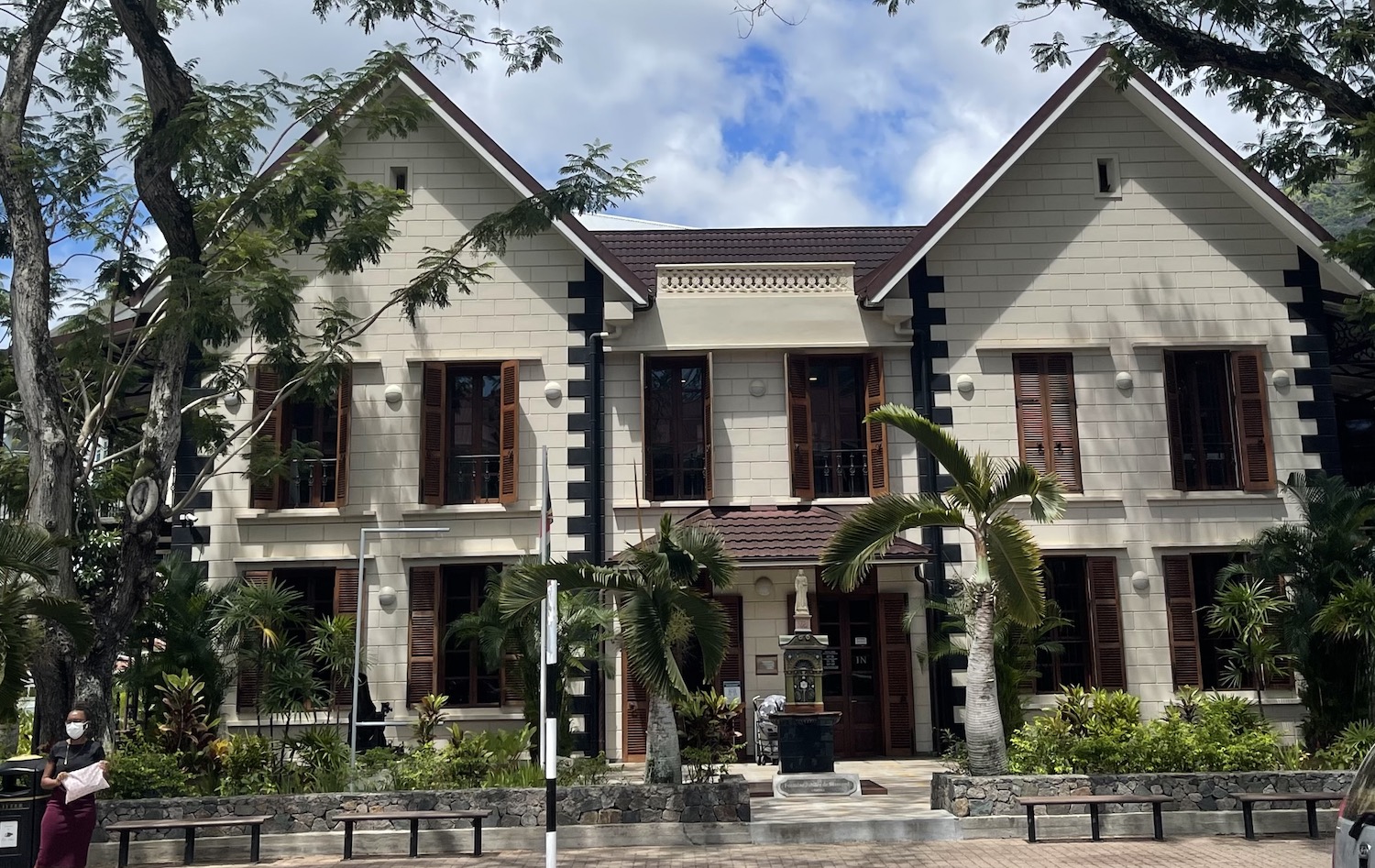
The National Museum of History, in the old New Oriented Bank building dating from 1885, tells well the story of the Seychelles, putting its natural beauty in the context of its colonial and slave trade past. It includes the French Stone of Possession from 1756. It is opposite the iconic diddy clock tower that was erected in 1903 in memory of the recently deceased British Queen. The State House that used to house the Governor is now the home of the President.
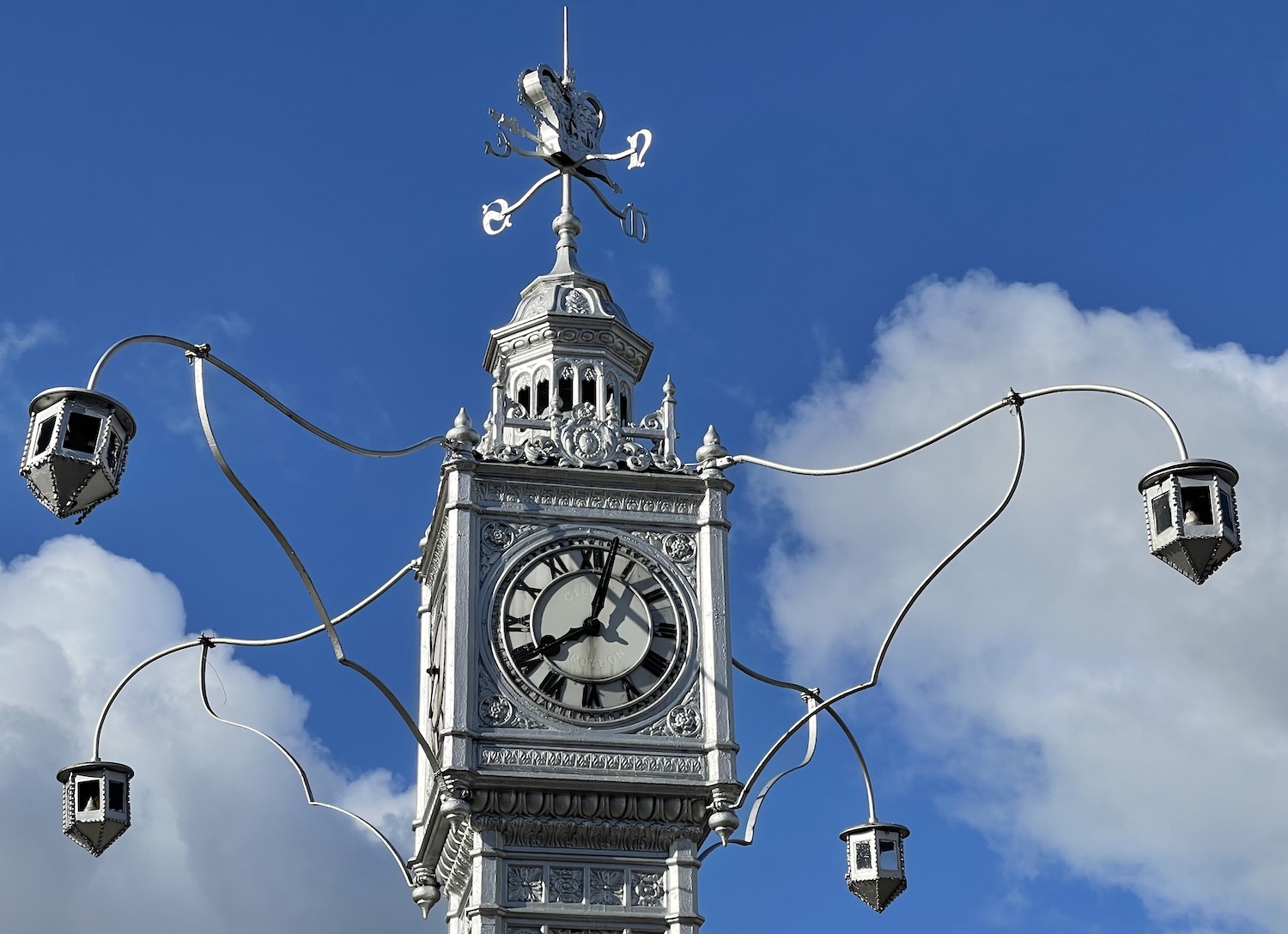
The Hindu temple was built because some slaves, especially domestic servants, were Indian and Malays. And there are several small mosques for the Muslims who comprise 1% of the population, descendants of Arab slaves brought here by Britain after they were taken from Arab dhows.
The small Sir Selwyn Selwyn-Clarke Market sells fruit and veg, fish and flowers. The stand out authentic local restaurant is Marie Antoinette, where the signature Creole tasting board, including chicken coconut curry, battered parrotfish fritters and mango salad, has not changed in fifty years.
Just south of Victoria is Eden Island, a massive private development with villas and apartments to buy as well as good options for short and long term rentals. It has the Eden Bleu hotel and the best local shopping for practical supplies, including the premier grocery store on the island, Spar, plus beach gear, liquor store and pharmacy. There is a row of restaurants, including the Boardwalk Bar & Grill on the corner, which face the green hills of the mainland. Also here is a large marina with several yacht charters, including big ones such as Sunsail and VPM; there is more choice here though we found it more convenient to get our yacht in Praslin as there you have more islands close by to hop between.

Only 8km south of Victoria is the airport. Taxis are extortionate so the best way to explore Mahé and access its best beaches is to hire a Mini Moke.
Let’s begin with the north half. Forty-five minutes up the east coast road from Victoria with views of Praslin and then Silhouette Islands on the horizon, past a number of resorts hidden in the hills, the tarmac peters out around Beau Vallon, the biggest beach community on Mahé. It is built around the street food stalls and beach wear stands, the Beach Shak, the Boat House and La Plage restaurants, Blue Sea Divers, and a tiny hut selling boat tours to Praslin and La Digue and day trips with snorkelling and barbeques to St Anne Marine National Park, a half-dozen little islands close together just 5km off Victoria. The beach at Beau Vallon is probably the most active in the whole country.

From Beau Vallon the road cuts back across country to Victoria in just ten minutes. From here, there are two roads that twist over the Morne Seychelles National Park green hills from east to west coast, and both are empty, both run under gorgeously overhanging tree canopies, and both guarantee lovely views of both sides of the island. There is a trail path that goes up Morne Blanc for the best views of the west side.
Up the west coast the best beach is at Port Launay, which has both Constance Ephelia Hotel and Restaurant Del Place. The narrow track that heads maybe 3 or 4 km on to Cap Ternay is a must. Tiny white-sand beaches are secluded behind swaying palms straight from central casting and it is easy to find a bloke to sell you a coconut or take you in his boat for a trip around the bay. The other good beach on the north-west side is down at Grand Anse, but unlike the others it is not protected by a reef.
It is widely thought that the south has the best beaches on Mahé. The second largest town, Anse Aux Pins, is a little south of the airport on the east coast and near here there is a contiguous line of pretty slips of sand, visible from the road but mostly locked behind private gates. There is a small gap where a hotel long ago burned down, allowing public access to some of the prettiest beaches going.
There is a larger beach opposite the Takamaka Rum Distillery. This is one of those gimmicks added for tourists, since the molasses are imported and the fermentation is pressurised to cheat the natural process. But the drink is everywhere in the Seychelles and the tasting is a hoot.
As you approach Anse Royal the road rises up the hill, giving you cracking views of the water below, looking mottled because it is so clear you can see the rocks and the fish in it way out to sea. All along the tiny beaches are dotted with locals and tourists bathing, hidden behind palms and iconic granite boulders that frame the scene, along with occasional pit stops such as Surfers Beach Restaurant.
At the Double Tree by Hilton, on the coast old maps call Pirate’s Cove after a practice that has long stopped, the road curves inland for a narrow passage from east to west.
After 3-4 minutes, about half way across the width of the island down here, at the town of Quatre Bornes turn left for a further 6-7 minutes on Intendance Road through pretty villages set among the trees in the hills until you reach the most gorgeous coast road. Turn right and the tarmac starts to disintegrate into a rocky track and then a sandy path, going past Anse Bazarca and Petite Police Beach, both of which are stunning and hidden under the palms. After another 3-4 minutes you will come to a chain across the road where you have to park. Walk down the narrow beaten track that opens on the south coast into Police Bay, which is thought by many to be the prettiest beach on Mahé. Unusually, it is very long – more than half a kilometre – and quite broad – 25m or so – with talcum powder sand. However, it is too dangerous to swim here and there are no facilities. It is though a major turtle nesting spot, where it is estimated that only 1 in 10,000 hatchlings will make it.
Two-thirds of the way back to Quatre Bornes there is a left turn down a sand track to the car park of Anse Intendance, another popular favourite for prettiest beach on the island. This is also a big beach by the standards of the Seychelles, with arcing sand dunes as well as rolling waves. There is a small beach shack at one end, near where a hotel is being built, and the Banyan Tree at the other.
Back at Quatre Bornes turn left and in 6-7 minutes you will be disgorged on to Anse Takamaka, which for my money IS the best beach on Mahé. It is a lengthy sweep of sand lined by takamaka trees, and it also benefits from having Chez Batista, with ocean view rooms and excellent Creole specialities, right on the beach.
North of here the beaches are all good of course, including big horse-shoe Baie Lazare and then the trio of Anse Gouvernment, Petite Anse and Anse Soleil, reached down a steep hill after the petrol station on the jutting peninsula that is littered with numerous art galleries and is home to some huge resorts including Kempinski and Four Seasons. From here you pass Anse Boileau on your way back to Grand Anse.
Praslin
It is 37km from Mahé to Praslin (pronounced Pralin). You can either take one of the 328 flights a week, a 15-minute scenic journey in a light aircraft. Or you can take the one-hour Cat Cocos ferry in Victoria from what was Long Pier Road, the charming finger of jetty you see in old photos, near all the giant windmills; there are also 15-minute Cat Rose ferries between Praslin and La Digue.
All the ferries come to the jetty at Baie St Anne’s in the south-east corner of Praslin. This is also a good place to charter sailing boats because around here there are many islands to hop between. Dream Yacht Charter is right by the pier, though the boats themselves, mostly catamaran, and the grocery stores, are not as high end as you might think. Sailing is undoubtedly the best way to see all those isolated beautiful beaches. The wind is usually light and easily manageable even for novices, and it is hard to beat the feeling of launching the SUP all alone in a bay first thing in the morning then catching a bonito or a tuna with a trawling line that is cooked on the onboard BBQ.
It takes less than half an hour to drive the 12km from one end of the Seychelles’ second largest island to the other and just ten minutes to get from Baie St Anne’s to Vallee de Mai. Protected by UNESCO, this is the home of Coco de Mere, so called because long ago when these giant coconuts were washed away to far flung shores they were first found by sailors who thought they grew on underwater trees. In fact, they grow only here.
The oldest trees have been alive for more than 300 years, producing the largest seed in the world, weighing up to 25kg, which can take seven years to develop. There are female and male plants and they each produce fruit that does look strikingly similar to human genitalia (the female shape is replicated in the passport visa stamp). The trunks are tall and straight, the leaves are giant fans, and at Vallee de Mai there is an enchanting path under the magnificent forest canopy.
Heading anti-clockwise around the coast from Baie St Anne’s – on a yacht or on the perimeter road – is Anse Volbert, where Cote d’Or is by far the most developed portion of the island, though the beautiful seafront amounts to no more than a couple of mid-tier hotels with pleasant restaurants and a couple of dive shops (Octopus Diver and White Tip Divers). A bit further along is the Raffles with scores of cottages hidden in the trees that hardly disturbs the serenity.
The Seychelles – the Inner Islands anyway – are not a premium dive destination. But the water is warm, the viz is terrific, and the coral-granite combinations can be lovely. You will see plenty of giant rays, turtles, octopuses and all your usual Indian Ocean friends. Whale sharks and mantas come in November-December when the plankton is plentiful.
The star turn on Praslin is Anse Lazio, further round on the northern most tip at the western end. There are always lots of yachts at anchor in the bay of this extremely attractive strip of white sand, which is touched by trees casting shadows and hiding two restaurants that open only for lunch: Bonbon Plume and Le Chevalier Bay. There are classic granite rocks at one side, near the Honesty Bar and the juice shack, where the path starts for hikes to Anse Georgette.
The little airport is at Grand Anse on the south side, near the long beach with a protective reef and white surf line.
La Digue
Indisputably the most beautiful of all the Inner Islands, La Digue also has the most authentic and buzzing little town. La Passe, in the north-west, has the jetty for ferries and is a popular anchorage for yachts. The high street is sprinkled with guest houses and souvenir stores as well as bike rentals (there are almost no cars on La Digue, just a few giant golf carts) and two dive shops (Trek Divers and Azzura Dive Centre).
Facing the granite rocks set in the sea almost purposefully for wedding photographers, with Praslin and gorgeous sunsets beyond, are Fish Trap and Tarosa.
North of town the coast road takes you past Le Domaine L’Orangeraie Resort and Spa to about a dozen palm leaf shacks with wooden picnic tables dotted at intervals along the beach.
To the south is a ten minute bike ride to the Union Estate vanilla plantation. This is a bit of a gimmicky theme park but you have to get a ticket to cycle through it in order to get to Anse Source D’Argent. And this is absolutely essential as there are ungainsayable reasons it claims to be the most photographed beach in the entire country, evidently not least on wedding days.
Leave your bikes near the kayak rental place and walk the sandy footpath to reach the beach that stretches more than a kilometre but is separated into beautiful compartments by large brown granite boulders that dress the stage for pictures of the mottled turquoise lagoon, the surf line, and the view back to Praslin and Mahé on the horizon. There is a coconut seller, a fruit cabana for a takamaka punch, and a beach bar with wooden benches.
Back at the Union Estate ticket booth, take the other road at the crossing to head east. It is a lovely bike ride up and down hill to reach Grand Anse, a big beach as good as its name. The hardworking team at the coconut shack will happily load your healthy drinks with lashings of takamaka.
From Grand Anse it is a direct thirty-minute walk for 2.5km along the gorgeous sandy Anse Caiman Nature Trail, but it is impossible not to meander and keep stopping to enjoy the views of the granite formations from beneath the palm trees that provide essential shade. The next beach along is Petite Anse, which at its centre has a juice bar with BBQ pits.
At the end of the Trail is Anse Cocos, yet another long curve of spectacular sand. At the far end by the natural pool formed by the rocks is rustic Bar Pirog, which will serve you Creole dishes. At the near end is Coco Bar, which has juices, loungers, and reggae. This trio of beaches are a treat but there is no anchorage here between May and October when the wind is from the south-east though there is from December to March when the wind is from the north-west.
There are plenty of other beaches almost as good and one particularly worth checking is Anse Marron.
Inner Islands
The forty-three Inner Islands, known as the Granitic Seychelles (though in fact two are coralline), occupy the coral plain in the shallow waters of the Seychelles Bank. They are all beautiful and most are easily accessible by yacht. In addition to the big three, there are a few particularly worth flagging here.
Curieuse Island, a short hop from Anse Volbert on Praslin, is home to a large colony of freely-roaming giant tortoises. You stumble across them on the beach and all over the woodlands behind. They are extremely friendly, will eat leaves from your hand, and respond by standing up tall when you gently stroke their necks. Here there is also a lovely 1.5km boardwalk through the mangrove, with BBQ facilities on the beaches at each end.
In the same marine park, tiny St Pierre Island is archetypal picturesque and a great spot for swimming, snorkelling and diving. About 10km north-north-west of here is 1.7km x 0.5km Aride Island, a haven for more than thirty rare bird species, including the blue pigeon, sooty and white terns, the lesser noddy, the shearwater and the brush warbler, all visible on the guided two-hour tour you have to take to visit the island.
Just south-west of Praslin are Cousin and Cousine, a pair of stereotypically beautiful islands. Cousin, stuffed with endemic fauna and flora, including toc tocs and fodies among its 300,000 birds, and an important breeding ground for endangered hawksbill turtles, also has to be visited on a guided tour; Cousine is private property and open only to those who stay in one of its handful of villas, such as Paul McCartney and Heather Mills on their ill-fated honeymoon.
Off La Digue to the north-east are five islands close together around some of the best dive sites of granite boulders with plentiful sealife. The largest and closest is Felicite, which in the nineteenth century acted as a kind of prison for banished nobility, but in the twentieth century hosted celebrity guests before its luxury lodge closed down. The others are Ile Cocos, Marianne, and the Sister Islands of Grande and Petite Soeur that between them provide a lovely sheltered anchorage.
The two biggest islands near Mahé are to the west: Silhouette, the least developed of all the inhabited islands despite the presence of a Hilton, and Ile Du Nord, where Wills and Kate spent their honeymoon.
By far the best way to reach the lesser islands, and frankly the best way to enjoy them, is to drift along in a sailboat.
Outer Islands
Way beyond the Seychelles Bank, spread over 200,000km² of Indian Ocean, are several groups of isolated Outer Islands. Together, they make up about half the country’s land mass but less than 2% of its population. Only half-a-dozen of these 150 or so islands are inhabited, mostly by contract workers fishing, collecting copra or studying the environment.
The Outer Islands are girdled with ships run aground on uncharted atolls and are therefore out-of-bounds for yacht charters unless you also hire a local skipper. The main way to get to them is on your own boat, although there are a couple of resorts reached by light aircraft, hideously there is an occasional cruise ship that passes through them on the way from Mahé to Madagascar, and there is a twice-yearly liveaboard with Aldabra Expeditions. I have not yet been but it is now my mission to do so.
What are labelled the Southern Coral Islands are just two isolated lumps of land that are far from the Inner Islands but are not in fact connected to any other group.
The Amirantes Group, 250km south-west of Mahé, contains 42 granitic islands and 29 coral islands, including Desroches, home of the Desroches Island Resort, a colonial-styled Four Seasons retreat with seventy-one rooms.
The Alphonse Group is 400km south-west of Mahé and comprises just three islands, only one of which is inhabited, the private island of Alphonse with a single Lodge of bungalows, suites and villas plus a dive shop.
The Farquhar Group, 700km south-south-west of Mahé, consists of thirteen coral islands and ten atolls. On île du Nord, the main island, there is a small settlement and a tiny airstrip.
The Aldabra Group is only 360km north of Madagascar and is composed of 67 raised coral islands. It is one of them, Aldabra Atoll, located at 9°24′S 46°22′E, 1,100km south-west of Mahé, that frazzles the imagination.
Aldabra is the world’s second-largest raised coral atoll, 35km long and 15km wide, a space equivalent to about one-third the land mass of the whole Seychelles, created by a sunken volcano, the rim line of which now pokes out just 8m above sea level. A diversity hotspot, a refuge for many endangered and unique species, protected by UNESCO, and described by David Attenborough as “one of the world’s greatest surviving natural treasures” when he complained of the accumulation of plastic pollution even in this remote spot.
It is extremely difficult for visitors even to get there, and its isolation, harsh terrain and scarcity of fresh water has deterred all but a handful of natural scientists from ever living there. It has the world’s largest population of giant tortoises, numbering over 100,000 individuals; it is an important nesting spot for green turtles and breeding ground for frigate birds; and it is home to the white-throated rail, the last flightless bird in the Indian Ocean. But it is what is in the waters of its pristine lagoon that I am desperate to explore. Watch this space.
